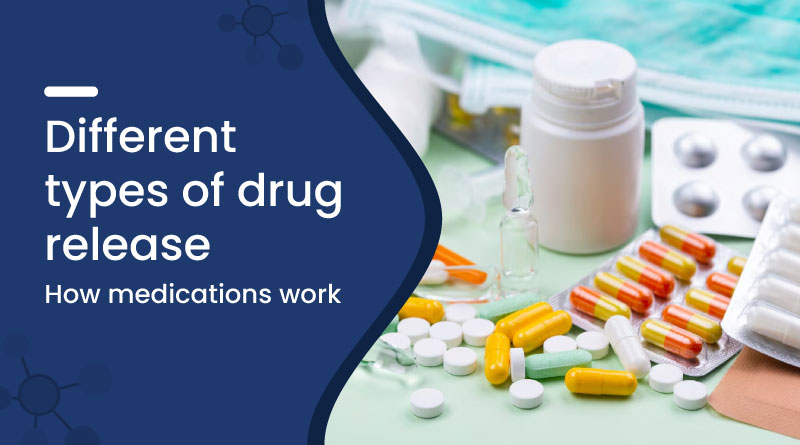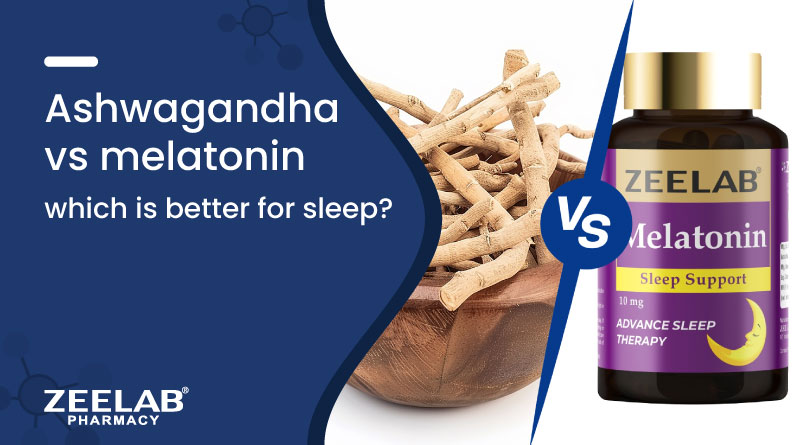Different Types of Drug Release: How Medications Work


Different Types of Drug Release
When it comes to pharmaceutical drugs, understanding the type of release mechanism can make a significant difference in how a medication works in your body. The type of drug release determines how quickly or slowly the active ingredient is released into the bloodstream. This, in turn, affects the medication’s effectiveness and how often you need to take it. In this blog post, we will explore the different types of drug release mechanisms, including sustained release, extended release, and other specialized systems that are commonly used in modern pharmaceuticals.
What is Drug Release?
Drug release refers to the process by which the active ingredients in a medication are released from its formulation into the bloodstream. Depending on the drug's design, the release may be immediate, sustained, or delayed. Understanding the different types of drug release systems is essential for choosing the right medication and ensuring optimal therapeutic effects.
Types of Drug Release Mechanisms
Pharmaceutical companies use various drug release mechanisms to meet the specific needs of patients. These systems are designed to control how the medication is released, its duration of action, and the rate at which it is absorbed into the bloodstream. Below, we will discuss the most common types of drug release systems.
What is Immediate Release (IR)
Immediate Release (IR) formulations are the most common type of drug release. In this system, the drug is quickly released into the bloodstream after ingestion, providing fast therapeutic effects. This type of release is ideal for acute conditions, such as pain or infections, where the body needs a rapid response from the medication.
- Quick onset of action
- Ideal for short-term treatment
- Example: Over-the-counter pain relievers like aspirin
What is Sustained Release (SR)
Sustained Release (SR) formulations are designed to release the active ingredient gradually over a prolonged period. This release mechanism ensures that the drug remains effective in the body for longer, reducing the frequency of doses. SR medications are typically used for chronic conditions such as arthritis, hypertension, and diabetes, where maintaining stable drug levels is essential.
- Gradual, continuous release
- Reduces the frequency of doses
- Ideal for chronic conditions
- Example: Medications for arthritis or chronic pain
What is Extended Release (ER)
Extended Release (ER) medications are similar to sustained-release formulations but provide a much longer duration of action. ER drugs are designed to release the drug slowly over an extended period, typically 12 to 24 hours, allowing patients to take their medication once daily. This release mechanism is beneficial for conditions requiring long-term management, such as heart disease and diabetes.
- Longer duration of action (12 to 24 hours)
- Once-daily dosing for convenience
- Ideal for long-term conditions
- Example: Blood pressure medications and antidepressants
Also Read - Sustained vs. Extended Release
What is Controlled Release (CR)
Controlled Release (CR) systems are specifically designed to release a drug at a predetermined rate over an extended period. This ensures that the drug remains at a therapeutic level in the bloodstream without significant fluctuations. CR systems are especially important for medications that require precise dosage and consistent blood levels to avoid side effects or inadequate therapeutic effects.
- Precise control over drug release rate
- Helps maintain constant drug levels
- Ideal for drugs with a narrow therapeutic window
- Example: Asthma inhalers or anti-epileptic drugs
What is Delayed Release (DR)
Delayed Release (DR) medications are designed to release their active ingredients after a specified delay. This release system allows the drug to bypass the stomach and release its contents in the intestines or at a specific site in the gastrointestinal tract. DR is particularly useful for drugs that could irritate the stomach lining or for medications that are better absorbed in the intestines.
- Delays drug release until it reaches the right site in the gastrointestinal tract
- Prevents stomach irritation and improves absorption
- Ideal for drugs that are sensitive to stomach acid
- Example: Certain antibiotics and gastrointestinal medications
What is Pulse Release (PR)
Pulse Release (PR) systems deliver the drug in discrete bursts rather than a continuous manner. This method mimics the body's natural rhythms and can be useful for treatments that require "pulses" of medication, such as hormone therapy or anti-inflammatory drugs.
- Drug delivered in discrete bursts
- Mimics the body's natural rhythms
- Ideal for specific treatments like hormone replacement
- Example: Hormone therapy or anti-inflammatory drugs
What is Zero-Order Release
In Zero-Order Release, the drug is released at a constant rate over time, regardless of its concentration in the body. This is beneficial for medications that require a steady and predictable release to maintain therapeutic levels. Zero-Order Release is commonly used for drugs with a narrow therapeutic window where precise dosing is critical.
- Constant release rate over time
- Ideal for medications with narrow therapeutic windows
- Example: Some cancer drugs or cardiovascular medications
What is Matrix Release
Matrix Release systems involve embedding the drug in a matrix (a type of material) that slowly dissolves, releasing the active ingredient over time. The matrix release mechanism is often used in sustained-release formulations and is commonly found in oral tablets.
- Drug embedded in a dissolving matrix
- Provides continuous drug delivery
- Ideal for long-term chronic treatments
- Example: Oral tablets for chronic conditions like hypertension or diabetes
Conclusion
Each drug release mechanism has its unique benefits and is tailored to specific therapeutic needs. Whether it’s for a quick response, sustained action, or precise control over dosage, these different systems ensure that the drug delivers its therapeutic effects in the most effective manner. If you’re prescribed a medication, it's essential to understand the type of release to ensure it works effectively for your condition. Always follow your doctor’s instructions and never hesitate to ask about the release mechanism of your prescribed medications for a better understanding of how they work.
Actionable Tips
- Always check with your healthcare provider about the type of drug release used in your medications.
- If you have trouble taking multiple doses, ask about extended-release or sustained-release options.
- Understand the release mechanism to improve your medication adherence and avoid side effects.
By knowing the differences between these drug release systems, you can make informed decisions and improve your treatment outcomes.
Frequently Asked Questions (FAQs)
Q. What is the difference between sustained release (SR) and extended release (ER)?
A. Sustained Release (SR) and Extended Release (ER) both release the active ingredient gradually over time, but the key difference lies in the duration and rate. SR provides a slower release over time but may require multiple doses throughout the day. ER provides a longer release, often up to 24 hours, allowing for once-daily dosing.
Q. Why are controlled release drugs important?
A. Controlled release drugs provide a consistent release of the active ingredient, ensuring that the drug remains at therapeutic levels in the bloodstream for a longer period. This helps in maintaining steady effects and minimizing side effects caused by fluctuating drug levels.
Q. How do delayed release drugs work?
A. Delayed release drugs are designed to release the active ingredient after a specific delay, usually to protect the stomach or to ensure the drug reaches a particular area in the digestive tract. This mechanism is particularly useful for medications that could cause stomach irritation or for drugs best absorbed in the intestines.
Q. What is matrix release in drug formulations?
A. Matrix release systems involve embedding the active drug within a matrix that dissolves slowly over time, releasing the medication gradually. This is typically used in sustained-release formulations, providing a consistent, prolonged drug release.
Q. How does zero-order release work?
A. Zero-order release systems are designed to release the active ingredient at a constant rate, regardless of its concentration in the body. This ensures that the medication is delivered at a steady pace, which is crucial for drugs that require precise dosing, such as those with a narrow therapeutic window.
Q. Can I take a sustained-release tablet multiple times a day?
A. No, sustained-release tablets are designed to release the drug over an extended period, typically allowing for fewer doses per day. Taking them more frequently may lead to an overdose or unwanted side effects. Always follow your doctor’s instructions on dosage.
Recent Blogs
Disclaimer : Zeelab Pharmacy provides health information for knowledge only. Do not self-medicate. Always consult a qualified doctor before starting, stopping, or changing any medicine or treatment.
















 Added!
Added!